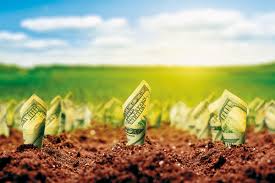By Edouard Lanckriet –
The soil is a living ecosystem that is capable of growth and diversification. It is also a productive capital but the conventional methods and technologies of its exploitation could lead to its destruction. Reversing this paradigm is the basis of a green growth strategy: the soil can become a carbon sink again, and the material and energy it produces can fuel genuinely sustainable industries, especially mobility. As a capital, the soil is not irremediably degraded; Sustainable management of soil capital is hence a priority for sustainable diversification and climate.
Key elements:
► A green growth strategy requires an understanding of the functioning of natural capital, which can grow not with the use of externally supplied resources but by generating it’s requirements through the natural cycle photosynthesis and production of organic humus. This is unique when compared with the classical economic approach to “capital”: all non-living capital degrades over time and can only increase by consumption of resources. The characteristics of Capital-soil offer the possibility of a truly sustainable growth only if the methods and technologies used to exploit it do not prevent this growth.
► Brazil presents a concrete example of this form of transition towards green growth. The upstream industrial biomass production sector has been coupled with downstream energy and mobility sectors.
Read more in French:

